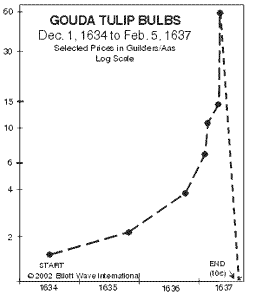In the early days of October 2013, I first began to see
them. They popped up on the wrists of the most unlikely victims, 10 year old
boys, teenage girls, even adults kneeling modestly in church in church. Where
had they come from? What were they for? And how had they taken over the entire
town of Reading overnight?
I never got my answers, but I quickly found out what they were called- Rainbow Loom bracelets. What appeared to be a toy manufactured for crafty elementary school girls took my world by storm, and YouTube tutorials on how to make intricately patterned bracelets (as well as classic fishtail styles) got thousands of hits. Those that knew how to make these bracelets took out requests from all of their friends, sometimes accepting payment in return.
The simplicity of this new toy only made its rise to fame
more baffling: a loom for braiding multicolored elastics into a stretchy accessory.
So why was it such a big deal? Did everyone really find these bracelets that
cool? The answer is yes, but only for the few months that the colorful fad
lasted. Now March of 2014, rainbow looms are being tossed into the back our
closets, joining the ranks of slap bracelets, silly bandz, tomagatchis, and the like.
Remember when having a horse-shaped rubber band was cool?
Crazy trends are always coming and going, and though we don’t
hear about them as much, the obsessions of the past were just as ridiculous as
some we have now. These trends often cause a “financial bubble”; a dramatic
rise and decrease in the price and popularity of the new product. The rainbow
loom fad was a million dollar market at its peak, but is now decreasing
significantly day by day, much to the displeasure of the retailers that
snatched the product up in bulk while it was still the hottest new toy.
One of the first massive fads in the history of humanity was
also a very simple product, simple as you could get, in fact. More destructive than the pet rock takeover of
the 1970s was the famous “Tulip Mania” a months long obsession with exotic
versions of the flower in the Netherlands.
Introduced to Western Europe by Oghier Ghislain de Busbecq in 1554, tulips were a product of the Ottoman Empire. Native to Northern Africa and Greece, the introduction of the tulip to the Netherlands was a result of the Columbian Exchange, a term for trading between the Old and New Worlds that we learned about in class.
The worst strain of the Tulip fad hit the Netherlands in November 1636. Tulips were classified into groups, the most prestigious and valuable being a mixed color tulip now found to have been affected by a virus. During the next seven months, the value of a single bulb was worth more than the annual income of a skilled worker. One tulip bulb was allegedly traded for eight pigs, and another for four fat oxen. Pictured above is a tulip whose bulb went for over 4,000 Guilders, the ten years' earnings of a skilled craftsman.
Men abandoned their careers and began investing in tulip bulbs, trusting that the product would make them rich. Since bulbs did not grow quickly, contracted payments were often made for not yet existent bulbs. A Dutch term for the trade of these inexistent tulip bulbs, windhandel, translates directly to “wind trade”, implying a trade of something nonexistent. These contracts meant that if the bulb was a dud, there was refund to the buyer. Some tulip bulbs were thought to have been traded over ten times a day.
Introduced to Western Europe by Oghier Ghislain de Busbecq in 1554, tulips were a product of the Ottoman Empire. Native to Northern Africa and Greece, the introduction of the tulip to the Netherlands was a result of the Columbian Exchange, a term for trading between the Old and New Worlds that we learned about in class.
The worst strain of the Tulip fad hit the Netherlands in November 1636. Tulips were classified into groups, the most prestigious and valuable being a mixed color tulip now found to have been affected by a virus. During the next seven months, the value of a single bulb was worth more than the annual income of a skilled worker. One tulip bulb was allegedly traded for eight pigs, and another for four fat oxen. Pictured above is a tulip whose bulb went for over 4,000 Guilders, the ten years' earnings of a skilled craftsman.
Men abandoned their careers and began investing in tulip bulbs, trusting that the product would make them rich. Since bulbs did not grow quickly, contracted payments were often made for not yet existent bulbs. A Dutch term for the trade of these inexistent tulip bulbs, windhandel, translates directly to “wind trade”, implying a trade of something nonexistent. These contracts meant that if the bulb was a dud, there was refund to the buyer. Some tulip bulbs were thought to have been traded over ten times a day.
Like all trends, Tulip Mania was not long lasting. By February
1637 the market had collapsed abruptly, turning the rich into paupers
overnight. Buyers failed to turn up at a bulb auction in Haarlem, possibly the
result of the bubonic plague outbreak in the city. The trade of tulips came to
a halt, bringing the first economically major fad to an end and leaving bulb “dealers”
in devastation. Like the Beanie Baby collectors of the 90s, these bulbs had been their entire futures.
Images:
http://upload.wikimedia.org/wikipedia/commons/d/d8/Tulipomania.jpg
http://images.mises.org/BruegelTulipMania.jpg
http://images.mises.org/BruegelTulipMania.jpg
http://www.thebubblebubble.com/wp-content/uploads/2012/05/Tulipomania.gif
http://www.plaid-creative.com/tumblr/FAD_infographic.gif
Information:
A, N. "Tulip Mania." Wikipedia. Wikimedia Foundation, 16 Feb. 2014. Web. 12 Mar. 2014. <http://en.wikipedia.org/wiki/Tulip_mania>.
http://www.plaid-creative.com/tumblr/FAD_infographic.gif
Information:
A, N. "Tulip Mania." Wikipedia. Wikimedia Foundation, 16 Feb. 2014. Web. 12 Mar. 2014. <http://en.wikipedia.org/wiki/Tulip_mania>.







Woah. Trends seem like a part of life today, but I've never thought about what the first trend might have been, it seemed too much of a modern concept. I am absolutely horrified to see on your chart that the trend of crocs has yet to cease, but I love the graph you found that perfectly resembles a trend. Starting with a steady increase, and then an unexpectedly abrupt downfall. I also liked your use of bolded words. The only questions I am left with is did royalty get in on the bulbs? Or was this a strictly common folks trend?
ReplyDelete